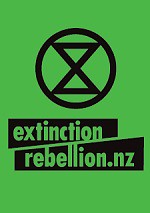Last night, I hacked the government's ETS allocation plan out of Budget data, revealing that over the initial phase of the ETS, they planned to allocate 100 MTCO2-e to sectors projected to emit 105 MTCO2-e. The obvious question which flows from this is "is it enough"?
The obvious answer is "no". Our Kyoto target is to reduce emissions to 1990-levels on average. At current projections, we're expected to exceed this by 22 MTCO2-e over CP1. So that's the amount we need to underallocate by. Anything more, and we're committing to having to buy credits on the international market. The problem is, we've started late (we really should have done this back in 2002, which was when it was originally expected to be implemented), and with the scheme being progressively introduced and initially excluding our worst polluters - farmers - there are serious equity issues in asking those sectors which enter early to bear the whole burden of emissions reduction. The initial goal should be to get the scheme up and running and get that carbon price into the economy; once that's done then we can progressively lower the cap to reduce emissions.
(And that said, the government should keep a close eye on things over the next few years and take the opportunity if it can to push things a little further. If for example the scheme seems to be succeeding or high oil prices reduce transport emissions, it should preserve those gains by reducing the allocation proportionately in later years. Though I suspect the lag time involved here will make that difficult).
The real potential for emissions reductions will happen after 2013, when all sectors are part of the scheme. The equity argument disappears then, and so the government can just start lowering the cap to force reductions.
As for what the cap will be then, the Budget and the net position again give some guidance. The Budget allocates ~23.5 MTCO2-e in 2011 and 2012 to cover the sectors which are part of the ETS at that stage (note that this is significantly less than the projected demand from those sectors of 35 MTCO2-e). In addition, the agricultural sector will add around 40 MTCO2-e / year, and the waste sector around 1.5. Assuming they allocate enough to cover the latter, we're looking at around 65 MTCO2-e of credits a year against annual demand of around 76.5 MTCO2-e. This is still higher than 1990 emissions (61.9 MTCO2-e), but clearly there are going to have to be some reductions or some international trading (or some deferred deforestation; the forestry industry will receive another 33 MTCO2-e of credits to cover deforestation post-2013. I don't know what their projected demand is, but they are likely to be a source of credits for everyone else).
Again, we can ask "is this enough"? The answer this time is "maybe". In Question Time the other day the government was suggesting that post-Kyoto we could be looking at an international target of a 5% to 15% reduction on 1990 emissions by 2018. We'd likely meet the former once forests were taken into account. And if we end up with the latter, we would at least be moving pretty strongly in the right direction.





